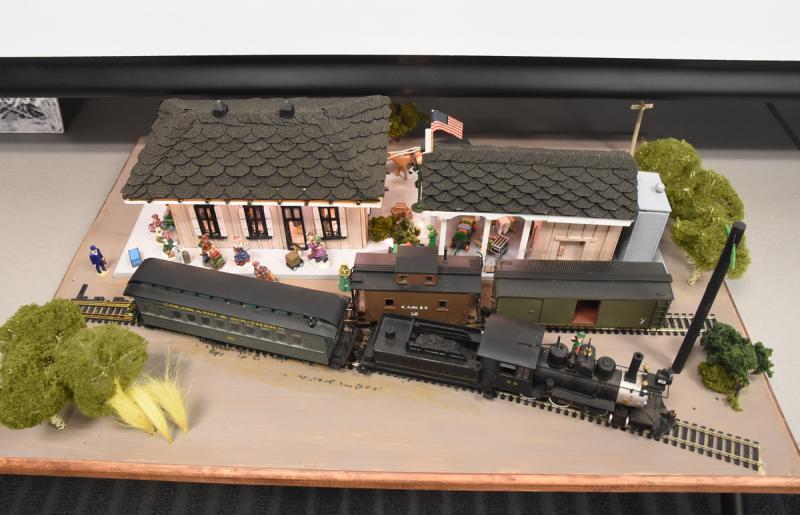A group focused on preserving Lewes’ railroad history is chugging along, working to bring railway cars to the city for display as part of a large, outdoor, interactive museum.
“We don’t have anything yet, but we’re pretty far along the way toward that,” said Randy Voith, president of the Lewes Junction Railroad and Bridge Association. Voith and other volunteers met May 10 at the Lewes library for their first meeting.
To complement the railcars, the group plans to build a replica train station and a garden railroad display. They also hope to preserve the historic manual railroad swing bridge in the Lewes-Rehoboth Canal, built in 1916.
The project goes back to summer 2017, when the Department of Transportation announced plans to decommission the railroad from Cool Spring through Lewes to Cape Henlopen State Park. Knowing citizens were interested in telling the story of the railroad in Lewes, Mayor Ted Becker and city council asked DelDOT to leave a 210-foot section of track in place between the Lewes Public Library and the Rollins Community Center.
“We’re not just going to put railway cars out there and say ‘wow there they are,’” Voith said. “It’s the whole 210 feet of track and the area around it.”
The group plans to obtain the equipment for free. Through connections with Wilmington Western Railroad, the group is likely to obtain a fireless locomotive once used by Delmarva Power & Light Co. powered by 400 degree water that’s pumped into the vessel. Pressure is released, creating steam that can power the locomotive for about six hours.
Meanwhile, Delmarva Central Railroad has three available cabooses in Harrington. After talking to the CEO of the holding company that owns the railroad, Voith said, the group will likely have their pick.
The third piece of equipment is a passenger car in Georgetown that dates to the 1920s. Voith said it’s an observation car with a porch-like area off the back. “Presidents gave speeches off cars like this,” he said.
The 80-foot coach features three sections – a baggage area, passenger section and a parlor in the back. He said its condition is good considering its age, and it would be ideal for educational displays. All three pieces of equipment total 170 feet, leaving about 40 feet to space out the cars. “It really is the perfect size for what we’re looking to do,” Voith said.
Each piece will need significant work before it can be placed in Lewes, Voith sad.
To go along with the display, Schell Brothers has offered to build an enclosure around mechanical equipment beside the library. The enclosure would portray the early 20th century train station that once existed in Lewes, said Jane Ellan Golde of Art in Bloom.
On the side facing the library, Golde said, there would be whimsical murals that tell a story about Lewes. They would be painted by schoolchildren under the direction of a muralist.
The side facing the library’s parking lot would feature a mural representing a 1930s steam engine pulling into the train station, while the opposite side would show Platform 9 3/4 at Kings Cross Train Station from the Harry Potter novels. The project would also hide inverters on the outside wall of the library. There, the group plans to add 16 panels representing book covers chosen from the New York Public Library’s list of 100 children’s classics.
To further tell the story of the railroad, the group hopes to work with the state to preserve the swing bridge in the canal. DelDOT’s decision to decommission the railroad was made partly due to the estimated $3 million in repairs the bridge required for safe use. DelDOT previously said the bridge would be removed, but nothing has occurred since the announcement in July 2017.
The final piece of the puzzle would be a model train garden. Voith said this component is the least developed; the idea, he said, is to build a 1,000- to 1,500-square-foot garden with model trains operating through a miniature landscape.
Gary Wray, president of the group, said a realistic timeline to complete the project is three to five years. In order to acquire the equipment, he said, the group first must form a nonprofit organization. They’ve filed the paperwork, but the process could take a year. In the meantime, he said, the group will continue planning. This year, plans call for laying the groundwork, investigating procurement and refurbishment of the equipment, and moving it to Lewes.
Wray expects the community to get behind the project and donate services needed to make it happen. In terms of actual money, he estimates the project will cost about $100,000, not including future maintenance.
























































